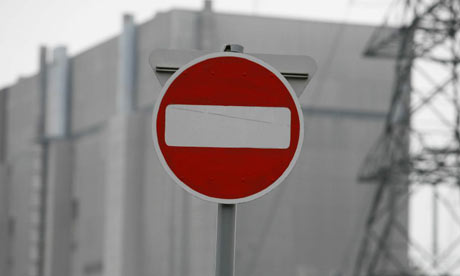A la mañana siguiente, el campesino se despidió y le dijo a Mulla que recordaría ese día como el más feliz de su vida.
Varios días más tarde, unos jovencitos llamaron a la puerta del sabio y dijeron que eran los hijos del campesino que unos días antes le había regalado un pato. De inmediato, Mulla los invitó a pasar, un poco sorprendido. Platicaron, comieron y se despidieron todos muy felices.
Una semana despues, dos hombres llamaron nuevamente a la puerta del sabio.
_ ?Quienes son ustedes?
_ Somos vecinos del hombre que le regalo el pato.
Para ese entonces, Mulla comenzaba a sentirse un poco incomodo, porque el pato habia resultado un regalo muy comprometedor. Sin embargo, puso al mal tiempo buena cara e invito a comer a los recien llegados.
Alejandro Jodorowsky, "la sopa de pato", en la sabiduria de los chistes. Mexico, Grijalbo, 1997, p.366. (Tomado de asi hablamos, intermedio 1, CEPE-UNAM)
Sorry, por la ortografia, pero estoy encima de la coreana, la lap, compas, la portatil. So, no accents, mates.
No, no es aqui, donde se nos esta cayendo el cielo. Vaya, que han aguantado muy bien el diluvio en la capirucha, sin tanto pancho. Solo les encargo una tarea: ?es mi percepcion personal o es que estamos observando en 2011, que llueve mas en el norte que en el sur del defectuoso? Ahi me avisan.

Now, si estan pensando que el post ha de tratarse sobre ese jolgorio, al que no nos invitaron, en el penal de juaritos, entonces estan pero si bien... equivocados.
Justo antes de que estamos listo pa agarrar... carretera, me avisan que hay cambio de ultima hora, una de nuestras anfitrionas quiere darme un recuerdito antes de partir. Entonces era cierto, una de sus hijas, se ha perdido nuestro performance, con el fin de preparar las mejores tostadas de maiz que he probado.
Menos recientes son las técnicas que debo recibir pa´no andar por ahí divulgando ideas exóticas con respecto a la chamba. How long since I´ve seen this for the very first time? Ojalá se utilizaran para internacionalizar la justicia y la distribución equitativa de la riqueza; pero sí es cierto lo que las cifras (no maquilladas) nos dicen, los únicos que se beneficiaron con estas modernas formas de abordar lo laboral son, as always, those who really did not need it that much. No es tiempo pa quejarse, y sigo absorbiendo las supuestas enseñanzas, mientras pienso en cuanto ha de aumentar la eficiencia de estos compadres, básicamente organizados en clusters de acuerdo a su percepción semanal, días después he de enterarme que, este patio no es particular: un subordinado ha de ser despedido por el viceroy local, por la simple y sencilla razón de recklessly expresar su opinión. Well, as in my weekdays job, a apechugar a lo que dice el contrato, mientras las condiciones podemos cambiar (algo que los ignorantes revisionistas históricos usualmente desconocen o pretenden no recordar, es que muchos de esos gigantes de la teoría rojilla, por razones diversas, tuvieron que dentro del sistema jalar). For the time being, no waves here, please.
Not so long ago, por puro gusto y compromiso tambien, asisti a un seminario de una colega del tema de los dias de semana (los fines, its a slightly different; right, companero?). Interesting, indeed. These days, there is a brand new hypothesis in store: we, the citizens in our lovely continent (and the rest -http://marcosalas.blogspot.com/2011/07/west-and-rest-o-el-mito-de-la-comunidad.html-, underdeveloped) are not only threaten by the unexpected (and impossible to forecast completely, yet; no matter for some its so hard to accept), but also by the widespread corruption of our politicias (and all those working in our public services) as well. Quite right, but not entirely true, Im afraid, myth. En los proximos teclazos me propongo demostrarles (sin condescendencia barata, http://siempremujer.com/cultura/manana-o-pasado-el-misterio-de-los-mexicanos-de-jorge-g-castaneda/7701/), los bemoles, los recovecos, los matices de esta suposicion.
Existen caminos sinuosos mas dificiles de entender.
_ ?Que pasa con ese chamaco? -le pregunto a mi mujer. Esta mucho mas calmado que los otros.
_ Le duele mucho la cabeza, me dijo su mamá -me contesta la oriental.
_ !Ah, pus pa pronto lo arreglamos! -le digo mas que sobrado. Y me lanzo al coche a buscar mi dotacion personal de painkillers.
_ ?Y eso? -me inquiere extranada, la de la penininsula coreana.
_ Aqui tiene, nomas porque no traigo mas, pero creo que con esos tiene pa que se le quite el dolor -le doy las instrucciones a la mama del chiquillo.
Al dia siguiente, me doy cuenta que a quien no le voy a quitar su mercado, es a mi carnal.
_ ?Ya se le quito? -le pregunto otra vez, muy ufano, a la mamá.
_ Pues ya no tiene dolor de cabeza, pero la calentura, esa, poquito se le quito -me contesta resignada.
_ Mmm -y dale la burra al trigo, compa, ni que fuera de tu canton. ?Sabes que, babe? A mi se me hace que a este chavito es otra cosa lo que le falto.
_ ?A donde vas, Marco? -me grita la chinita todavia no acostumbrada a mis arranques.
_ Aqui tiene, mi estimada. Que se tome todas estas (suplementos vitamicos, que mi cuidadosa mujer, pone en mi mochila cada fin) hasta acabar.
Esta vez el diagnostico es certero.
_ A ver, que pase el destemplado -digo, mientras toco la frente del desnutrido. Mmm, ahora sí estás bien, papá.
Días después, conozco a quien le brinda mayor atención.
Una discapacitada, semiparalizada adolescente, intenta divertirse, mientras realiza esfuerzos titánicos, con los globos como todos los demás de su edad.
_ Antes que me juntara con ellos era peor, namas se arrastraba. Ahora ella solita camina hasta desde la entrada sin protestar -nos dice mientras imaginamos a esta nena, lastimosamente caminando por la carretera bajo el inclemente sol.
Yo, sin embargo, imagino el patrón. Y a pesar de ello, me atrevo a preguntar.
_ ?Y qué le pasó?
_ Pus, es que cuando bien chiquilla, la calentura le pegó, y así me la dejó.
_ No hay médico en el pueblo -se me sale una de esas impertinentes preguntas que todos ustedes conocen ya.
_ No, aquí, no -me contesta con la mirada clavada al suelo.
_ Tonz, ?por aqui no pasan camiones pa ir al hospital? -vuelo imprudentemente a preguntar.
_ No, pero si queremos ir al hospital, pues a un taxi $300 tenemos que pagar.
Y dada la anterior informacion, creo que poco tengo que agregar.
con
Describing the fcuking conditions of that woman in Oaxaca
Entrevista con Campa
A ver que inventamos pa terminarlo chido
how does it feel to be loved, finally?
(http://www.youtube.com/watch?v=3gS08ewErgo, Last Chance Harvey Official Movie HD Trailer)
MARKesO_Oaxaca;
Miahuatlan de Porfirio Diaz, Oaxaca;
http://www.iih.unam.mx/moderna/ehmc/ehmc02/012.html
29/07/11
SPECIAL REQUESTS:
Green Roof (Recycling dog fouling).
Oigan compas, desde la azotea de su Canton, me he dado cuenta de que, hay un monton de camaradas en cuatro, perdon, de cuatro patas en los techos; como supongo que de alguna manera tendran que aliviar sus necesidades. ?Que tal y si recolectamos sus valiosos excedentes organicos pa nuestros green purposes? Si, ya sé, que primero hay que encontrar valientes recolectores.
http://www.rochdale.gov.uk/default.aspx?page=2151
The Thirteenth Year (part one)






